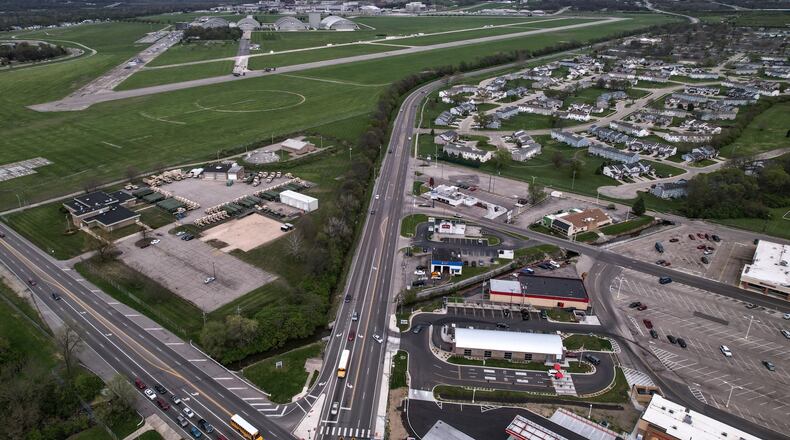“As we develop things that are potentially incompatible (with those flying missions), we put both people and missions at risk,” said Col. Patrick Miller, commander of the 88th Air Base Wing, the host unit at Wright-Patterson.
The core flying mission permanently stationed at the sprawling base is the 445th Airlift Wing, whose C-17 cargo planes will have an estimated 417 arrivals and departures to and from Wright-Patt in 2022, according to a new federal study, called the “Air Installation Compatible Use Zones Study” or “AICUZ.”
But air traffic at Wright-Patt goes well beyond that. The base hosts airplanes involved in training and seeking shelter from weather challenges elsewhere. In all, the base is expected to host more than 11,100 flight operations this year.
That has implications for local construction. Cell towers, wind turbine farms, even vegetation can be problematic, as can sources of reflected light or anything that produces dust, smoke and steam.
Credit: Chris Stewart
Credit: Chris Stewart
While the base is big, it’s also divided. Area A (about 5,228 acres) and Area B (about 2,399 acres) are bisected by Ohio 444.
Given the base’s role as an air installation, there are also noise considerations. In areas where noise levels exceed 75 decibels, residential development is discouraged. As well, the building of homes, churches and schools is discouraged in areas where aviation accidents are possible.
All of this information, including detailed maps, was presented in a public meeting at the base’s Twin Base Golf Club Wednesday evening.
Last year, a Wright Patterson Regional Council of Governments was formed — a body including Dayton, Beavercreek, Fairborn, Huber Heights and other area municipal governments to tackle issues affecting the base.
One function of the council is to ensure “there are no constraints in the future that could prevent any future (military) mission bed-downs,” Miller said.
When the Air Force decides where to “bed down” or locate new missions, leaders examine issues “inside the fence-line” of military bases and outside the fence, too, Miller said.
The new AICUZ was released in concert with the Wright-Patterson Council of Governments’ recent decision to hire a consultant to help them navigate issues surrounding development around the base.
Council members voted earlier this month to hire Matrix Design Group, based in Crofton, Maryland.
The council received a federal grant of about $350,000 to develop a compatibility use plan for shepherding development around the base, located in Greene County’s northwestern corner — and close to several quickly growing communities, including Fairborn, Beavercreek, Huber Heights and others.
Matrix will complete that plan for the council.
Local leaders have said the health and growth of Wright-Patterson — the largest single-site employer in Ohio, with about 32,000 military and civilian workers — is critical to the success of the entire Dayton region.
Need more information
Wright-Patterson’s guidelines can be found at https://www.wpafb.af.mil/AICUZ/.
About the Author


